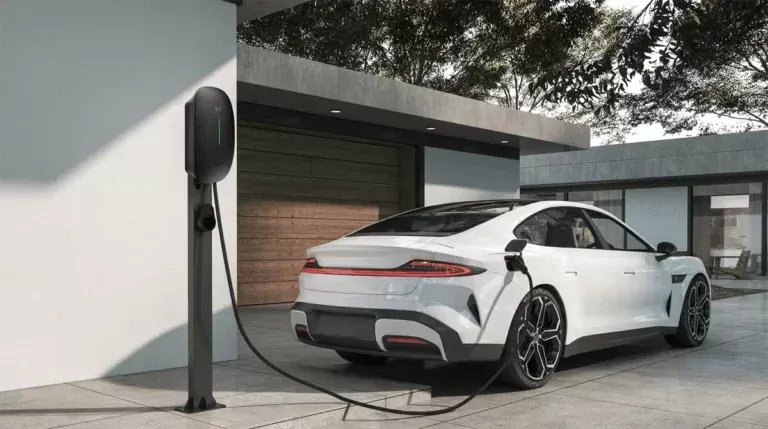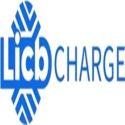Notifications

6 minutes, 38 seconds
-170 Views 0 Comments 0 Likes 0 Reviews

Introduction
As the world shifts toward sustainable energy, electric vehicles (EVs) have become a central element of the green revolution. However, one critical aspect of the EV ecosystem—charging infrastructure—faces several challenges. One such challenge is surge protection. EV charging stations deal with substantial amounts of electricity, making them particularly susceptible to power surges. These surges—sudden, sharp increases in voltage—can result from various factors, such as lightning strikes, grid fluctuations, or internal faults. Although brief, these voltage spikes can be devastating, damaging sensitive electronics, causing system malfunctions, or even leading to complete failure.China EV Charger Manufacturer is a leader in providing advanced and reliable electric vehicle charging solutions. Their range of efficient chargers is designed to meet the needs of both individual users and commercial operations, supporting the growing shift toward sustainable transportation.
Surge Protection Devices (SPDs) act as a primary line of defense against these harmful voltage spikes. By redirecting excess energy safely, SPDs help prevent damage to charging stations, the vehicles connected to them, and—most importantly—ensure user safety. Without proper surge protection, the safety and reliability of EV charging stations are compromised, which could slow the widespread adoption of electric vehicles.
This article explores the significance of surge protection for EV charging stations, explains how surge protection systems work, and offers guidance on selecting the right devices to safeguard this vital infrastructure.
Types of Surge Protectors for EV Charging Stations
Surge protection devices (SPDs) for EV charging stations are categorized into three types—Type 1, Type 2, and Type 3—each designed to address different surge protection needs.
Type 1 SPDs
Type 1 surge protectors are designed to handle direct lightning strikes or high-energy surges that enter via the main power line. Installed at the building’s power entry point, these devices serve as the first line of defense, especially in areas prone to severe electrical disturbances. They are essential for locations at high risk of lightning strikes or electrical storms.
Type 2 SPDs
Type 2 SPDs provide secondary protection, safeguarding internal electronics and communication systems from residual surges and grid fluctuations. Typically placed near the charging point, they work in conjunction with Type 1 devices to mitigate moderate surges that may bypass the primary protection.
Type 3 SPDs
Type 3 surge protectors offer localized protection for sensitive components within the EV charger. Positioned near the end devices, these devices act as the final defense against minor surges, ensuring the protection of low-power electronics and communication circuits.
By combining Type 1, Type 2, and Type 3 SPDs, EV charging stations can achieve comprehensive surge protection, safeguarding both the infrastructure and the vehicles they serve.
The Importance of Surge Protection for EV Charging Stations
Protecting High-Value Infrastructure
EV charging stations represent significant investments for businesses, governments, and individuals. These stations include advanced electronics and software that manage power delivery, user authentication, and payment processing. A single power surge can damage these critical components, resulting in expensive repairs or replacements. Surge protection ensures the durability and reliability of this infrastructure, protecting the investment and maintaining consistent service.
Ensuring Safety for Consumers
Safety is a top priority in any electrical system, and EV charging stations are no exception. Power surges can not only damage equipment but also present serious safety risks to users, such as overheating, electrical fires, or even electric shocks. By implementing surge protection, operators can minimize these risks, creating a safer environment for EV owners and reducing the potential for hazardous situations.
Reducing Downtime and Maintenance Costs
Downtime in an EV charging network can be costly. When a charging station is damaged, repairs can take days or even weeks, leading to lost revenue and customer dissatisfaction. Surge protection helps to minimize the risk of damage, reducing unexpected downtime and lowering long-term maintenance costs.
Compliance with Industry Regulations
As the EV industry grows, regulatory bodies are imposing stricter standards for charging infrastructure. Many of these regulations require the inclusion of surge protection devices to guarantee safety and reliability. By adopting surge protection proactively, charging station operators can ensure they stay compliant with these regulations, avoid potential fines, and maintain their legal standing.
Conclusion
Surge protection is an essential aspect of EV charging infrastructure, protecting sensitive components from harmful voltage spikes and ensuring the safety of both users and equipment. With the increasing adoption of electric vehicles, it is critical to implement robust surge protection systems to preserve the reliability and functionality of charging stations. By understanding the different types of surge protectors and their roles, businesses can make informed decisions on how to best protect their infrastructure, minimize maintenance costs, and comply with industry standards. Investing in surge protection not only secures the longevity of EV charging stations but also supports the growth of a safer, more sustainable future for electric vehicles.Know more about Google SEO Directory
China EV Chargers EV Charger Manufacturer Smart EV Chargers Electric Car Chargers Electric Vehicle Chargers Electric Car Charging Stations

